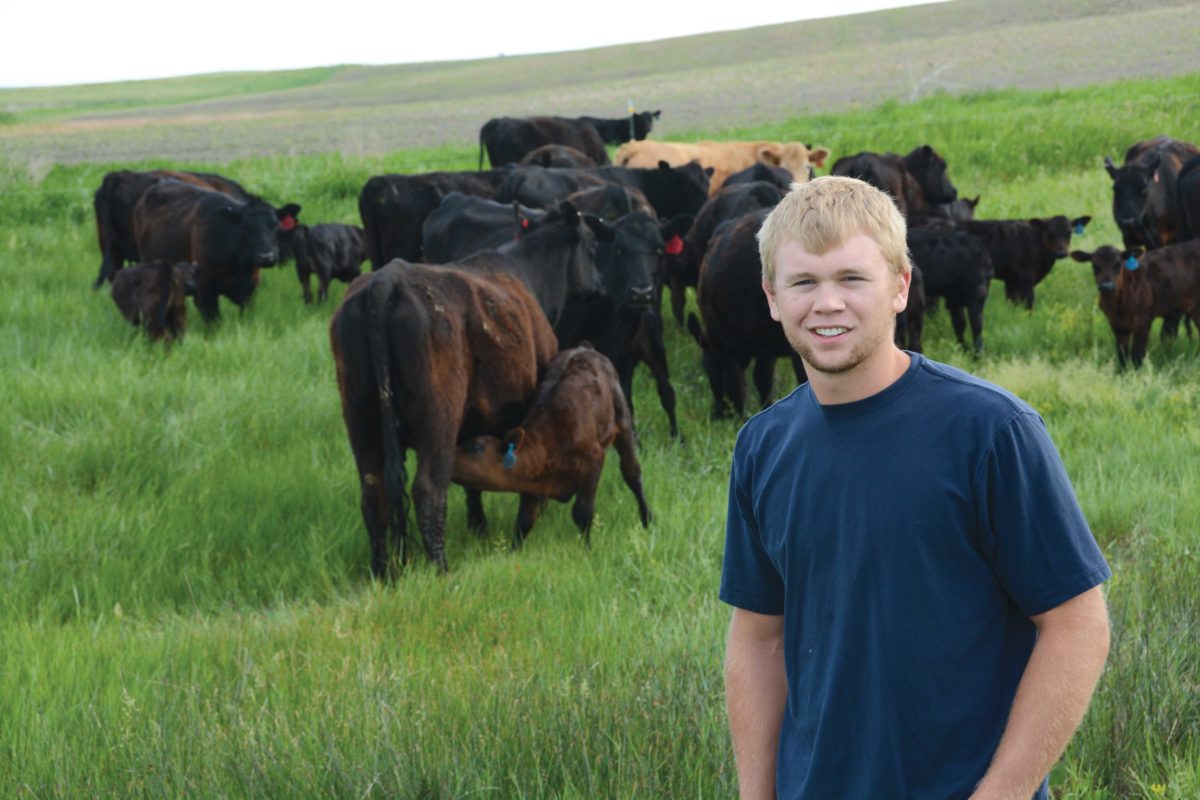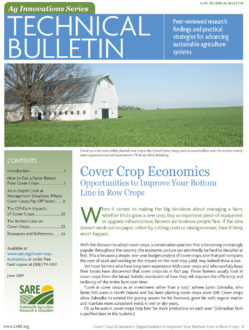
Justin Zahradka, Lawton, N.D.
Primary cover crops: oilseed radishes, turnips, cereal rye, oats, peas, sorghum sudangrass and hairy vetch
Justin Zahradka is no stranger to change, and he’s even more familiar with innovation. Farming the same ground his family homesteaded in 1898, Zahradka is the fifth generation living on and working their Walsh County, N.D., operation. His path to farming and adoption of cover crops began in 2011, while still in high school, with the purchase of bred heifers. Focused on data and economics even at that early point in his career, Zahradka participated in a data gathering project that examined the costs and benefits of cover crops and grazing. With support from state SARE funding, Zahradka found that cover crops enabled him to “be more productive on each acre.” Based on his work with cover crops and his overall qualifications, Zahradka was named FFA’s National Star in Agriscience for 2015.
Since that time, he has explored a number of commercial enterprises for his farm including feeder cattle, custom grazing and row crops, and he ended up with the diversified crop and livestock operation he currently operates. Cover crops have been a common denominator throughout every shift in his operation, which has grown to 900 acres including a 160 head cow-calf operation and 500 acres of row crops. On his row crop acres, Zahradka initially focused on just a couple cash crops along with cover crops, but, driven by his bottom line, he has since modified his rotation to include corn, soybeans, spring canola and wheat, with half his land in forages for year-round grazing.
Preferring mixtures to the use of single species, Zahradka typically plants a combination of oilseed radishes, turnips and cereal rye after wheat. Those acres will routinely be grazed from the end of September into November, extending forage production for his cattle. Acres targeted for forage production might see a mixture of oats, peas, sorghum sudangrass and vetch. “Those interested in a cover crop mix should start simple with one grass, one legume and one brassica in a mixture,” Zahradka advises. “Most importantly, look at cover crops as an investment rather than a cost.”
Continuous use of cover crops has netted a small but sustained 0.1% annual increase of soil organic matter in his soils, which has been verified by soil test data. When considering the value of his investment in cover crops, Zahradka also points to the resiliency of his soils in both wet and dry years and the benefit of an extended grazing season for his cow-calf operation. His data supports the conclusion that profits per animal can be greater when incorporating cover crops into an operation. In addition, Zahradka’s labor is decreased by having the livestock “do the feeding,” which enables him to expand his operation without the need to add full-time hired labor. “Cover crops can help improve your quality of life,” Zahradka says. “The operator gains labor savings by letting the livestock do their job.”
